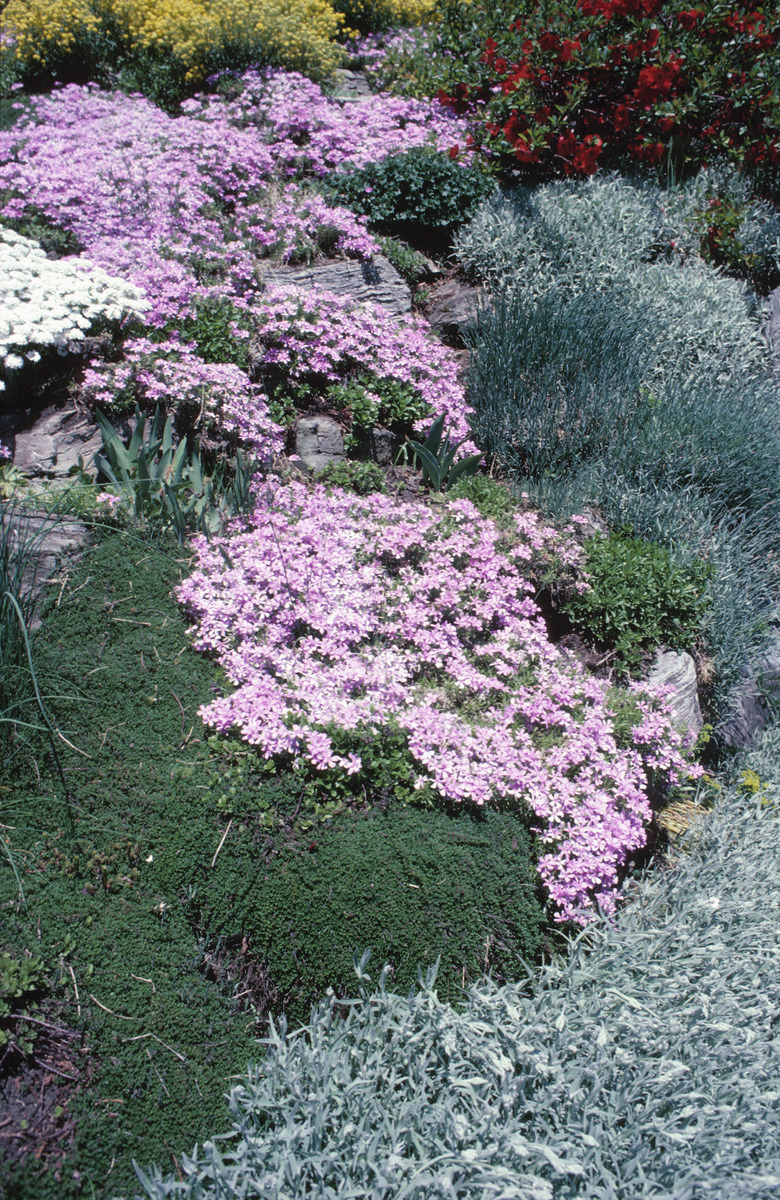How To Plant Creeping Phlox For Ground Cover
A low-growing ground cover that spreads up to 3 feet, creeping phlox (Phlox subulata), also known as moss pink, is a spring flowering perennial, perfect for slopes and other hard-to-maintain areas of your landscape. Grown in U.S. Department of Agriculture plant hardiness zones 2 through 10, well-established plants tolerate deer feedings, moderate drought conditions and hot summers. Plant creeping phlox from container plants in spring or fall when temperatures are mild, spacing multiple plants 12 to 18 inches apart for quick coverage of empty spots in your garden.
Step 1
Step 1
Turn or work the soil 6 to 8 inches deep using a garden fork, spade or tiller. Choose an area of the landscape that receives four or more hours of direct sunlight each day — creeping phlox grows best with six or more hours of daily sunlight.
Step 2
Step 2
Incorporate 2 to 4 inches of organic matter, such as compost or leaf mold, into the worked soil to improve fertility and water drainage so the creeping phlox is more likely to thrive.
Step 3
Step 3
Water the creeping phlox in its nursery pot until the water drains out the bottom. Wait about one hour so the plant can become well-hydrated before transitioning into the garden.
- A low-growing ground cover that spreads up to 3 feet, creeping phlox (Phlox subulata), also known as moss pink, is a spring flowering perennial, perfect for slopes and other hard-to-maintain areas of your landscape.
- Incorporate 2 to 4 inches of organic matter, such as compost or leaf mold, into the worked soil to improve fertility and water drainage so the creeping phlox is more likely to thrive.
Step 4
Step 4
Remove the creeping phlox from its pot, squeezing or cutting the sides until the soil and plant slide out.
Step 5
Step 5
Dig a hole that is the same depth and about two times as wide as the root ball. Set the plant in the hole and backfill the hole with soil, tamping it lightly to remove large pockets of air.
Step 6
Step 6
Water the garden with 1 inch of water. Keep the soil moist for the first growing season to ensure the creeping phlox stays well-hydrated while it becomes established in its new space.
Step 7
Step 7
Apply a 2- or 3-inch layer of mulch, such as shredded leaves, around and between the plants to conserve moisture and prevent weeds from growing there, especially necessary before the creeping phlox fills in the space.
Warning
Creeping phlox can become invasive in the garden, so control growth with pruning as necessary.
Things Needed
- Garden fork, spade or tiller
- Organic matter
- Trowel
- Garden hose
- Mulch
